From the time of Sargon the Akkad of ancient Sumeria until French hero Napoleon Bonaparte, numerous conquerors left trails of victories around their path and gained power/influence as a result of their conquest.
There are the following 3 different types of underlying criteria worthwhile to be noted while being considered as one of the greatest conquerors in history.
1) Positions should be established based on how much lands occupied by conquerors at its greatest extent.
2) Conqueror should be a ruler of his empire as well.
3) Incursions/raids would not be included as conquest unless and until a conqueror can occupy territories by force then establishing his hold on a particular land either through his vassals or directly administrated them through his governors.
There are the following 3 different types of underlying criteria worthwhile to be noted while being considered as one of the greatest conquerors in history.
1) Positions should be established based on how much lands occupied by conquerors at its greatest extent.
2) Conqueror should be a ruler of his empire as well.
3) Incursions/raids would not be included as conquest unless and until a conqueror can occupy territories by force then establishing his hold on a particular land either through his vassals or directly administrated them through his governors.
Darius the Great (550-486 BC), King of the Achaemenid Empire of Persia. Under his rule, the Persian Empire reached its greatest territorial extent from modern-day Pakistan in the east to Sudan in the west.
Under Darius's command, the Achaemenid military greatly expanded into southwest Egypt and into the Nubian lands of Libya and coastal Sudan. In 516 BC, Darius embarked on an eastward campaign towards central Asia, Bactria (modern Afghanistan), Indus Valley, and conquered them all. His military campaign brought further success against those Scythians in the north and on westward expansion, he conquered many Greek city-states around the Aegean Sea such as Paeonia and Macedonia including the area of Thrace in the Balkans.
After the huge conquest of Cyrus the Great (5,500,000 km2, excluding the kingdom of Persis i.e. 122,608 km2 land area), Northeastern Egypt, and entire Cyprus by Cambyses II (800,000 km2), Darius truly earns the reputation as the most effective ruler and conqueror who not only conquered and ruled vast expanding empire but also a capable administrator who reform the system of taxation. Darius died in 486 BC possibly from fever.
Ahmed Shah Abdali (1722-1772 AC), founder of the Durrani Empire in Afghanistan and considered as Baba (father) of Afghanistan because he is one who led the foundation of the modern state of Afghanistan. Initially, he acted as a young soldier in Nader Shah’s army. When the Afsharid Empire collapsed after the death of Nader Shah in 1747, he establishes his own kingdom in Afghanistan. After his coronation as King in 1747 AC, Ahmed Shah Abdali started a conquest that eventually conquered the entire regions of Afghanistan, Pakistan, and Northeastern Iran. Ahmed Shah began his military conquest by occupying the Ghazni from the Ghiljis. His army contains mostly of Pushtun tribesmen of his region. He annexed the Mashhad in 1751, the capital of Nader Shah’s Afsharid Empire of Persia. During his campaign in India, he was fighting against Sikhs in 1757 beaten them badly and destroy their famous Golden Temple, and also defeated the Marathas in a famous Third Battle of Panipat in 1761. Ahmed Shah Abdali was died on Oct 16, 1772, in Kandahar province, Afghanistan.
Ahmed Shah Abdali (1722-1772 AC), founder of the Durrani Empire in Afghanistan and considered as Baba (father) of Afghanistan because he is one who led the foundation of the modern state of Afghanistan. Initially, he acted as a young soldier in Nader Shah’s army. When the Afsharid Empire collapsed after the death of Nader Shah in 1747, he establishes his own kingdom in Afghanistan. After his coronation as King in 1747 AC, Ahmed Shah Abdali started a conquest that eventually conquered the entire regions of Afghanistan, Pakistan, and Northeastern Iran. Ahmed Shah began his military conquest by occupying the Ghazni from the Ghiljis. His army contains mostly of Pushtun tribesmen of his region. He annexed the Mashhad in 1751, the capital of Nader Shah’s Afsharid Empire of Persia. During his campaign in India, he was fighting against Sikhs in 1757 beaten them badly and destroy their famous Golden Temple, and also defeated the Marathas in a famous Third Battle of Panipat in 1761. Ahmed Shah Abdali was died on Oct 16, 1772, in Kandahar province, Afghanistan.
8. Napoleon Bonaparte (3,000,000 km2)
7. Attila the Hun (4,000,000 Km2)
6. Mahmud of Ghazni (4,500,000 km2)
5. Nader Shah of Persia (5,000,000 Km2)
4. Alexander the Great (5,200,000 Km2)
Alexander III of Macedon (356-323 BC), famously known as Alexander the Great was king of Macedon, an ancient Greek kingdom and member of the Argead dynasty. Born in Pella, Greece, and succeeded his father, King Philip II, at the age of 20. He spent the next 13 years of his ruling life as a conqueror. He is generally considered as an undefeated military commander in over dozens of battles despite facing his outnumbered opponents. Alexander's military prodigies included in the Battles of Granicus, Issus, Gaugamela, Hydaspes, etc. Only his death can stop his plan for Arabian conquest.
3. Cyrus the Great (5,500,000 Km2)
2. Genghis Khan the Great (5,600,000 Km2)
From 1211 to 1218 his armies invaded Central Asia and in 1219 Genghis Khan personally led his military expedition against the Khwarezmian Empire (Conquered 1,700,000 Km2 landmass out of 3,600,000 Km2). However, he personally not conquered every state/empire that brought into his large empire, even he not completely conquered the Jin and Khwarezmian Empire, his son and successor Ogedei completed the entire conquest of both Jin and Khwarezmian Empire after his death. Besides, even in his massive Mongol Empire (12,000,000 Km2) more than half of his territory was incorporated/conquered by his son Jochi (Siberian landmass) and his two most successful commanders Subutai (Kazakhstan except for few parts of southern landmass) and Jebe (Modern day entire Xinjiang province of China). Genghis Khan sent Jebe to conquer the Kara-Khitan khanate (1,500,000 Km2) in 1218, which he successfully conquered this empire up to the region of Lake Balkhash in eastern Kazakhstan and Subutai to defeat the Merkits and their Cumun-Kapchak allies in central Kazakhstan (1217-1220), Subutai defeated the Merkits and their allies and conquered the region up to the Caspian Sea (2,200,000 Km2) in western Kazakhstan and his son Jochi to conquer the forest people of Siberia (2,000,000 Km2) in 1207 AC, he conquered the entire region up to the Tuva, all tribes were submitted with little resistance except Yenisei Kyrgyz (but eventually they also defeated) and far eastern Siberian regions (800,000 Km2) were probably conquered by Jochi or Subutai as part of the Mongol expansion.
Before his death (1227), he has successfully conquered the entire Xia Empire (1,000,000 Km2) in northwestern parts of China. His empire is more than twice the size of a Roman Empire and spread a new wave of terror across the world. His descendants doubling the size of his empire and spread the entire Mongolian landmass from Eastern Europe to the Pacific Ocean.1. Timur the Great (17,000,000 Km2)
After the disintegration of the Mongol Empire, the four khanates emerged from it, the Chagatai khanate, Il-khanate, Golden horde khanate, Yuan khanate, which later became known as the Northern Yuan Dynasty after the conquest of Peking (Dadu) by Chinese leader Hongwu in 1368 AC. Timurid army conquered all the remnants of four khanates in which the western section of the entire Mongol Empire was personally subdued by Timur and Northern Yuan Empire was annexed by one of the Timurid general Timur Buyansher in 1404. Timur Buyansher converted to Islam when he arrived at Samarkand, the court of Emir Timur in 1403. With the help of the Timurid army, he conquered the entire Northern Yuan Empire in 1404 and became the vassal of Timur.
Initially, Timur occupied large parts of Transoxiana (in modern-day Central Asia) and Khorasan region from 1363 (Samarkand in 1366, and Balkh in 1369), and was recognized as the sole ruler over them in 1370. From 1370 to 1405, Timur embarked on a series of global conquest that rocks the foundation of Europe and Asia. From 1370 to 1390, he annexed the entire Turkistan (entire Central Asia and Westernmost parts of China). From 1380 to 1390, he occupied the entire regions of Khorasan and Persia. Later on, Timur deeply penetrated into the Siberian lands for more than 700 miles of the uninhabited region then west about 1000 miles, advancing in a front more than 10 miles wide and met the forces of Tokhtamysh, Khan of the Golden horde at the Battle of the Kondurcha river in 1390. During the battle, Timur emerged as victorious. From 1390 to 1396, he invaded the modern-day Caucasus, Russia, Ukraine, and defeated the armies of Tartars, Mongols, Cumans, Volga Bulgars, Russians, Italian colonies around Azov (Russia) & Crimea (Ukraine), Georgians, and Armenians. Timur appointed the vassal leader of the Golden horde; Timur Qutlugh and general Edigu, who later on defeated the army of archduke Vytautas the Great. Vytautas with the help of the Pope organized a crusade against the Timurid hordes. With the help of 38,000 soldiers, 50 princes from different states, and sophisticated weapons; Vytautas marched against the Timurid hordes in 1399. His army contains mostly of Lithuanians, Wallachians (Romanians), Moldavians, Poles (Polish), and Teutons (Germans) who were annihilated by the Timurid hordes at the Battle of Vorskla River. It was the final major Crusade against Muslims. In 1395, Timur also defeated the Russians and occupied Moscow. Only Persian revolt can further stop his advancement in Europe, Timur swiftly returns Persia and restores the order at the point of his sword's blade. Next, he invaded India in 1397 on the pretext that the Muslims were too tolerant of Hindu subjects. His invasion of India was terrified, he slew tens of thousands of Hindus and left a trail of carnage all across the way. Before the battle of Delhi, he butchered 100,000 captive Hindus. Mahmud of Tughlaq with his 50,000 force of his army with 120 war elephants arrived before Timur in the Battle of Delhi. Timur defeated the Tughlaq forces and sacked Delhi. Timur left Delhi in December 1398 and marched on Meerut. Then he rode up to Haridwar and sacked the holy city on January 23, 1399. Before the end of 1399, Timur started a war with the Ottomans of Turkey and the Mamelukes of Egypt. In 1400, Timur invaded Christian Georgia and Armenia. Besides, he also defeated the powerful Egyptian Mamluk army in 1400 and conquered Syria. He invaded Baghdad in June 1401 and captures Iraq. Finally, he invaded the Ottoman territory and defeated the Great Ottoman Sultan Bayezid Yaldrim in 1402 at the Battle of Ankara. Timur also decisively defeated the Christian knight Hospitalers in Smyrna (1403), permanently wipe out the Crusaders in the face of the earth. After the end of the westward campaign, Timur marched towards Samarkand while he crossed all his way back to the home he occupied the invincible castle of Georgia and gain control over the Caucasus at the start of 1404. Before the end of 1404, he planned to conquer the Ming Empire of China. Timur (Tamerlane) died from fever in Otrar, Kazakhstan on February 17, 1405, while he was on his way to conquer the last great empire that stood in his way of complete world domination.
Unlike Cyrus, Alexander, Attila, and Genghis, neither he was a son of a king nor son of a mighty chieftain who holds any territory. As a son of a small tribal chieftain in Transoxiana who governed the small town (Kesh) near Samarkand; Timur started his empire from scratch to rule half of the known world. Unlike Genghis Khan, Timur wasn't relied on his sons and generals to conquer the empires; he personally led military campaigns against his enemies wherever he went, except the conquest of the Northern Yuan Empire by Timur Buyansher (1404) and conquest of greater parts of Grand Duchy of Lithuania (1399) by Timur Qutlugh. As a conqueror, he conquered lands more than anyone else in history; his conquest is truly gargantuan which included the entire regions of Central Asia (Kazakhstan, Uzbekistan, Turkmenistan, Tajikistan), Transcaucasia (Georgia, Armenia, Azerbaijan), Mogulistan/Xinjiang (western China), entire countries of Afghanistan, Pakistan, Iran, Iraq, Syria, Lebanon, Kuwait, Israel (except southern parts), Turkey (except Byzantine Pontus), Northwestern parts of India, western Mongolia, eastern Ukraine, and much of Russia (southern parts of European Russia and western Siberia).
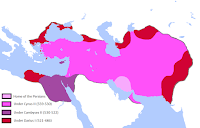

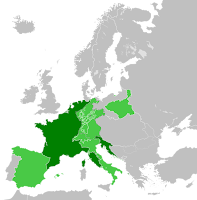

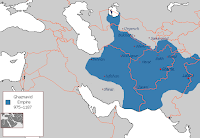


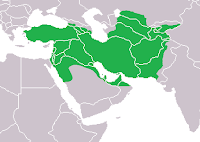
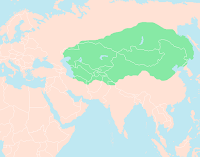

Feel free to ask any question regarding list, surely i will give you my appropriate answer as best as i could.
ReplyDeleteI am astonished by the writing and acquired a great knowledge about the subject. Thanks. We need more writings on the similar subject
ReplyDeleteand quality.
Sir, aap ki molamat tou bohat hai magar you look do not look like babar e azam. he used to sleep 5 hours and can wrestle with entire army.
ReplyDelete